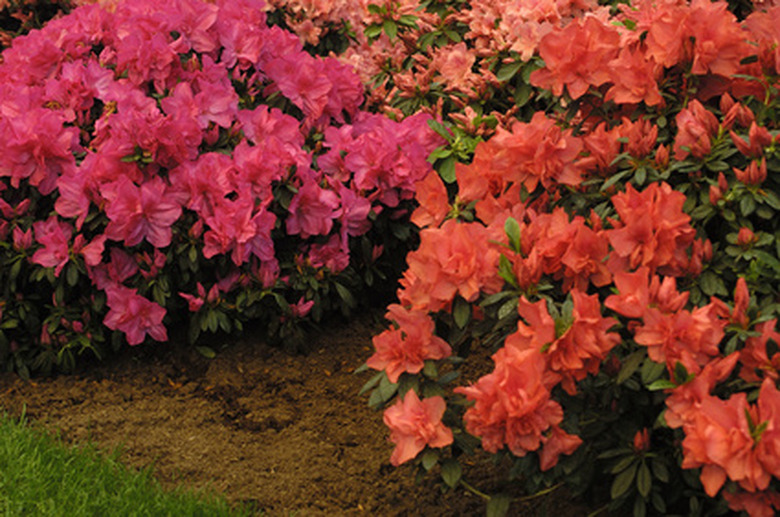What Is The Growing Zone For Azaleas?
Deciduous azaleas and evergreen azaleas generally live near or under trees; they are two of the eight types of the genus Rhododendron. All 17 species of azaleas native to North America are deciduous; they drop their leaves in the fall and are dormant in the winter. Their flowers bloom red, orange, pink purple, yellow and white. Growing zones for azaleas depend on the variety.
Deciduous Azaleas
Native azaleas generally grow best in the climates in which they naturally evolved. Most species of azaleas native to North America evolved the southeast U.S. and will grow best in USDA Plant Hardiness Zones 6 to 8. They can survive minimum temperatures of -10 to 20 degrees Fahrenheit.
- Deciduous azaleas and evergreen azaleas generally live near or under trees; they are two of the eight types of the genus Rhododendron.
Evergreen Azaleas
Most evergreen species are native to Asia; they do not go dormant to protect them from severe cold winter and grow best in more temperate to warm climates. They produce blossoms in the same color as North American azaleas but do not yield yellow blooms.
Rainy Climate
The western azalea (Rhododendron occidental) is the azalea best suited for the rainy climate of Northern California, the Pacific Northwest and British Columbia. It yields pale pink or creamy white flowers, and its leaves turn crimson or yellow before they drop in the fall. Rhododendron occidental is difficult to grow outside of this area.
Cold Weather Zones
Most native azaleas grow best in the southeastern or southern Midwest, but three species do well in USDA Zones 4 and 5 in the northern U.S. states and Canada where winter temperatures drop as low as -20 degrees Fahrenheit. The roseshell azalea (Rhodendron prinophyllum) is a cold-hardy native to wooded areas from southeastern Canada to Virginia and west to Missouri. It produces clove-scented flowers that are sometimes white but usually pink or purplish pink. This azalea is often combined with other varieties to produce cold-hardy hybrids. The rhodora azalea, (Rhododendron canadense) is native to swamps and stream banks in Canada south to Pennsylvania. It is very cold hardy but doesn't do well in hot, dry summers. The Pinxterbloom azalea (R. periclymenoids) ranges from Vermont to Alabama and west to Ohio and Tennessee.
- Most evergreen species are native to Asia; they do not go dormant to protect them from severe cold winter and grow best in more temperate to warm climates.
- The western azalea (Rhododendron occidental) is the azalea best suited for the rainy climate of Northern California, the Pacific Northwest and British Columbia.
Hybrid Cold-Hardy Azaleas
The University of Minnesota developed Northern Lights, a cross between R. prinophyllum and Rhodendron x kosteranum. Over the years numerous cold hardy varieties have been developed from Northern Lights. These generally do well in areas with cold winters. More than 10,000 different cultivars are said to have been developed, with new ones appearing regularly. Some of these produce blossoms of a particular color; others have been hybridized to provide azaleas that withstand winter cold and summer heat. Commercial hybrids usually include growing zone information on the label.
